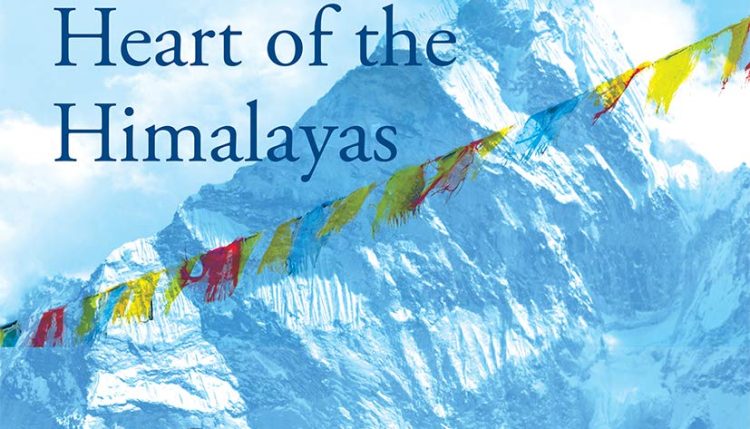
Book review: Into the Heart of the Himalayas by Jono Lineen
Jono Lineen`s complete travelogue, INTO THE HEART OF THE HIMALAYAS, Speaking Tiger Books, is a lovely read.
The author, a curator at the National Museum of Australia, walks across the Himalayas in a bid to come to terms with the sudden unexpected death of a younger brother.
This book which was released in 2012, is written in a style that touches upon everything lightly, even as Lineen proves to be a perceptive observer filling the pages with descriptions of the breathtaking terrain, the interesting people he meets on his trek, and observations of how the people of the mountains live their hard lives in what he has categorised as the Muslim, Buddhist and Hindu Himalayas.
The air was so still it rang in my eras. …I was shocked to think I was in the second most populous country in the world. On all sides were monumental deodar cedars whose branches reached down out of the darkness, touching the ground by my feet. Through the branches I saw the moon rise. Delicate cedar fronds were silhouetted by the ghostly light and their glossy needles shimmered as a light breeze danced them round and round.
Acute observations
There are acute observations on the India-Pakistan stand-off of decades, of the stoic lamas of the gompas in Ladakh, the complete desecration of the land by heavy-handed construction as well as used and damaged forests, navigating the typical and tiresome Indian red-tape regarding places he could visit with and without permits, as he descended to the plains. There are points made on several everyday things like faith (simple faith…is empowering but one-dimensional while the considered faith, one derived form personal exploration, is a belief you can call your own, something that will survive the storms of everyday life.)
In short, the veteran climber writes as well as he treks down dangerous trails, followed by huge local dogs with the most gentle demeanour and bands of children some who throw stones at him for the sheer heck of it. His inherent good humour sees him through most situations, however, and in the end, his utter contentment seeps through: a knowledge that I was in the right place at the right time. I was walking when I should walk and sleeping when I should sleep. Beyond that I needed nothing.
Things I learned from the book:
- That 108, the most auspicious number in Buddhism, is the number of impediments in the way of individuals seeking a higher state of consciousness.
- That the Dalai Lama was known to travel to large outdoor initiations with a man who could change the eather hrough his meditation, always ensuring a sunny day for the event.
- That in the higher reaches of Himachal Pradesh, there existed human bear scarers, men who travelled from village to village offering bear deterrent services, mainly a set of mantras and a magic staff to ward off the marauding beasts.
Two things bothered me, though: the author keeps talking of men in the higher reaches of Pakistan who used coconut oil to groom their heads and beards. Coconut oil? I wonder…
Then, the word sadhu and saddhu appeared several times, as if the editor wasn’t too sure which spelling to retain.
But my god, is the book a keeper.
Related links:
Book review: Walking The Himalayas by Levison Wood
Book review: The Old Ways by Robert Macfarlane
Book review: Wild Himalaya by Stephen Alter
Book Review: The Himalayan Arc Edited by Namita Gokhale
Book review: Himalaya, an Anthology edited by Ruskin Bond and Namita Gokhale